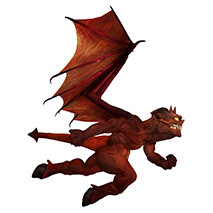Arcadia in 1981 is a large entertainment complex to the left of P’s Postcards from Pifl on the Harbour Road.
Originally built by Josiah Caxton at The Grand Arcadia Gardens on instruction from the de Pifl family in 1865. They had been inspired by a trip to Paxton’s Crystal Palace, completed for the Great Exhibition of 1851. Featuring a glass roof and glass front onto the street the Arcadia required a significant excavation into the steep hillside behind. The glass and ironwork roof is supported on a series of ionic columns.
Augustis Rushin in his guidebook commented that “…Grand was rather an overblown description for the Gardens… Somehow combining classical columns with modern iron ceiling couldn’t have been done in a less consistent way. Also I have to say the proportions are all wrong.”
The heart of the original garden display was an avenue of ten palm trees imported “at great expense” from Spain.
The Grand Arcadia Gardens was renamed The Arcadia Winter Gardens in 1880 along with a new planting scheme to attempt to attract new visitors.
In 1896 left hand third was converted into The Electric Arcadia Ballroom for dancing. Electric lighting was installed throughout and the venue became known as The Grand Illuminated Electric Arcadia Gardens and Ballroom.
In 1897 a table serving tea and cake was added at the right hand end with a few tables and chairs. This was really more of an accident than a plan but it attracted visitors so it remained.
1901’s innovation was the existing facility for serving tea and cakes were enhanced by adding a small kitchen and modern serving counter at the right hand side of the Arcadia. Continental style chairs and tables were imported to bring the venue into the 20th century. This became known as the Arcadia Tea Room.
In 1922 a bar serving cocktails “Kubla Khan’s” was added at the back of the Gardens behind the tea room.
In 1932 The Arcadia Ballroom was converted into (The Arcadia) Electric Rinkomania a roller skating rink.
Sometime in the 1950s on rainy days the staff began running games of Tombola in the Tea Room.
In 1955 the cafe was modernised and expanded to remove Kubla Khan’s.
In 1960 ten Palm Trees were imported with money raised by a collection and with the support of the Town Council to replace the original trees.
In 1965 Rinkomania was replaced with a 10 lane ten pin bowling alley now separated from the rest of The Arcadia by a wall. The Tea Room was ripped out to make way for a long thin bingo counter with stools for the patrons. Facing the bingo counter a back to back row of fruit machines was added. Café facilities were added to the back of the remaining garden section with seating at the front making for very awkward service. The columns were covered and the glass roof replaced with a flat ceiling over Rinkomania and the bingo and arcade machines. When word leaked that there were plans to remove the palm trees legal action was threatened on the grounds that they did not belong to the venue having been paid for by the council.
The café limped on into the 1970s but the constant noise of bowling, arcade machines and bingo. Its space slowly eaten into with the addition of more fruit machines and then video game consoles. In 1979 the café closed and the frontage remodelled concealing what was left of the Victorian building. Rows of video games now fill the space. The venue became known officially as The Electric Light Arcadia or simply Arcadia. The ten trees forming the avenue stand as an incongruous reminder of Arcadia’s origins.
At the back of the Arcadia a small warren dug out of the cliff includes toilets for customers, cleaners room, staff room, managers office, electric switch room, store rooms, gardeners room, first aid room and a workshop. In one of these rooms, behind a storage cabinet a door into the service corridor that runs behind Arcadia and P’s Postcards from Pifl. Rumours persist locally that somewhere in the warren is a walled off stock room that stores the remains of Kubla Khan’s stock of spirits.

Leave a Comment